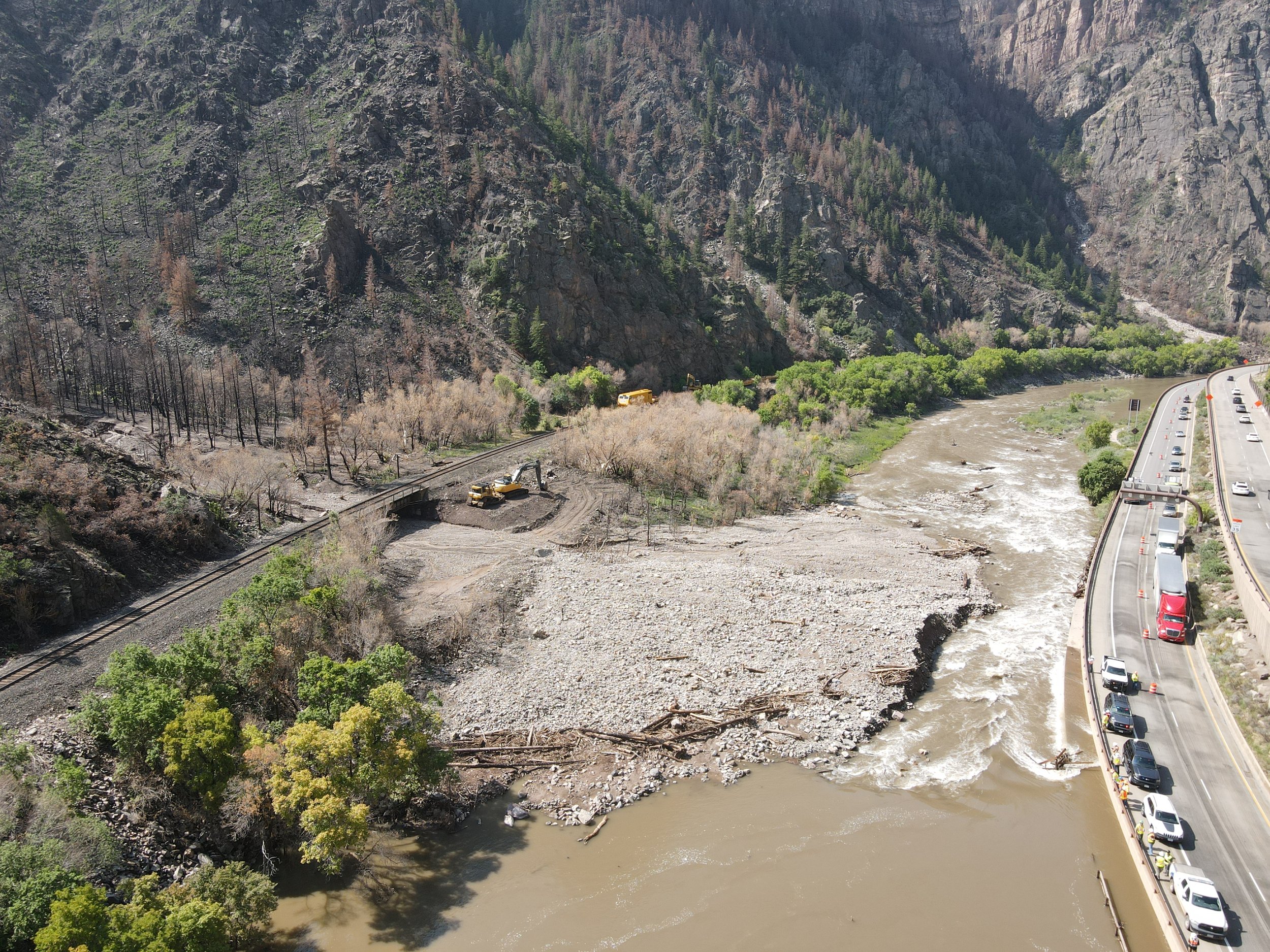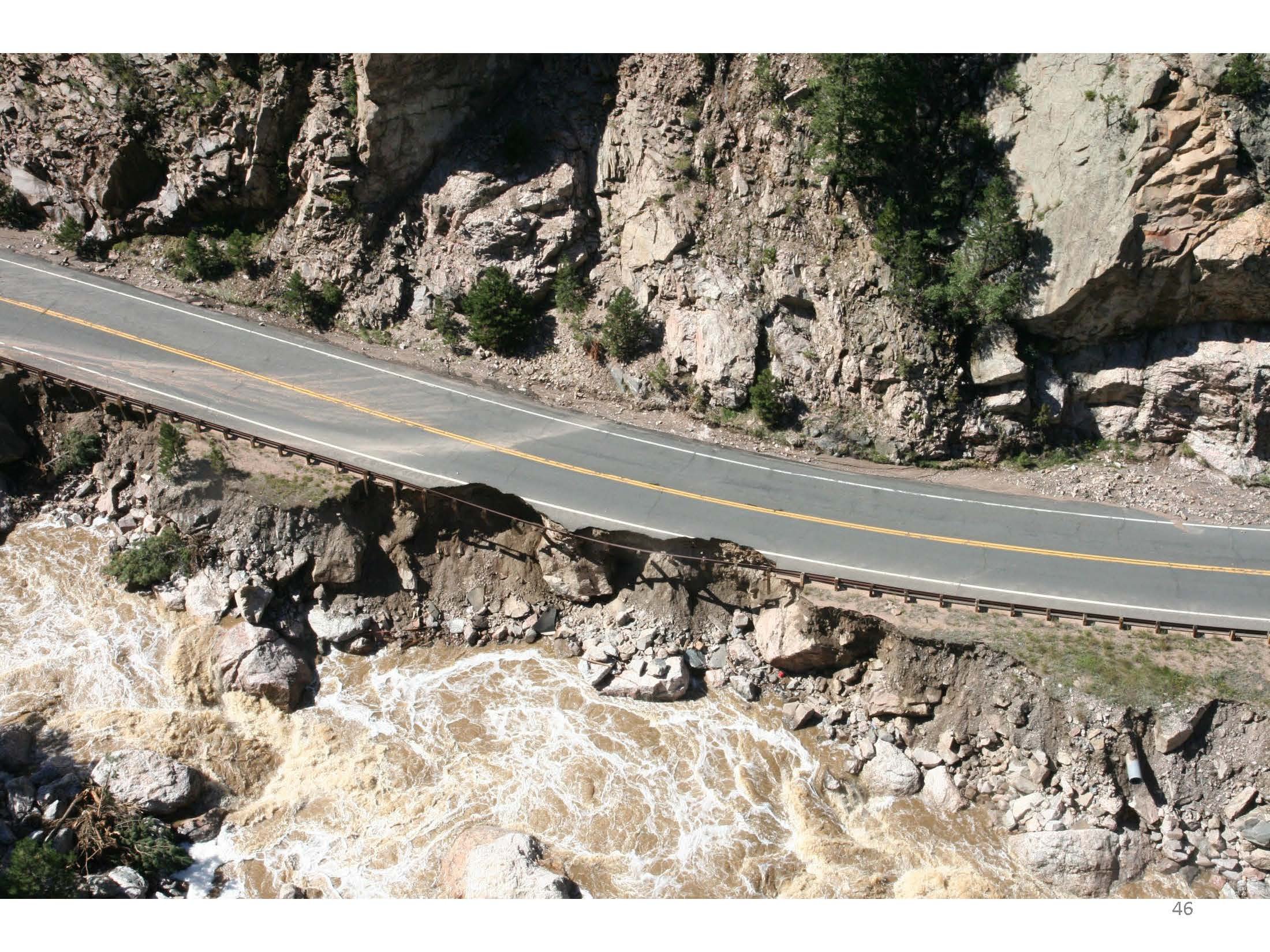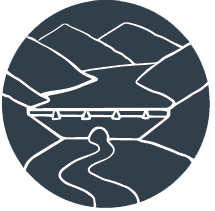
VALUE AT RISK:
Transportation network
-
Post-fire hazards such as flooding, erosion and sedimentation, and debris flows can be particularly destructive to transportation infrastructures such as roads, railways, and bridges and culverts, particularly where these were not engineered to accommodate the excessive water, sediment and debris available in a post-fire environment. Where this infrastructure parallels or crosses the path of these hazards, minor and often major damage can occur rendering infrastructure unsafe or destroying it completely.
-
Before fires occur, emergency managers and community planners can compile a detailed inventory of infrastructure vulnerable to post-fire hazards. This inventory, as part of an emergency planning effort, will help emergency and transportation planners understand where pre-fire protection measures should be focused in order to protect critical egress/ingress routes.
Deployment of early warning systems can help to alert transportation managers as to when major debris or sediment loads may be moving through the system. These warnings have been used frequently along Colorado Interstate 70 to close portions of it in order to protect highway users from the dangers of debris flow and rockslide in post-fire storm events. Hard measures to capture sediment and larger debris—such as debris basins, floodplain reconnection, and debris racks—can be installed above where these drainages cross critical transportation corridors. Perhaps more effective, with long-term planning and vision infrastructure improvements such as infrastructure upgrades (e.g., increased crossing spans), retrofits (e.g., lowering approaches of roadbeds to remove floodplain obstructions), and/or relocation (e.g., moving roads out of stream corridors) are likely the most effective preparations we can make.









